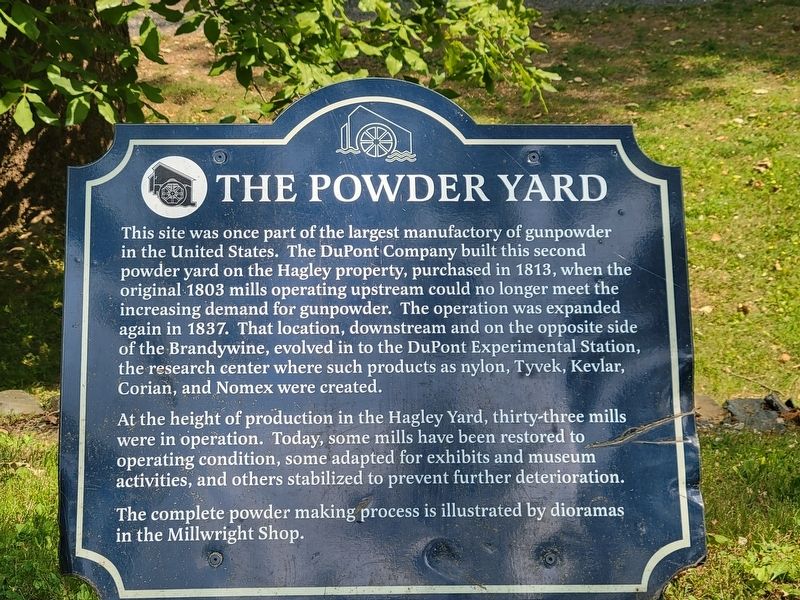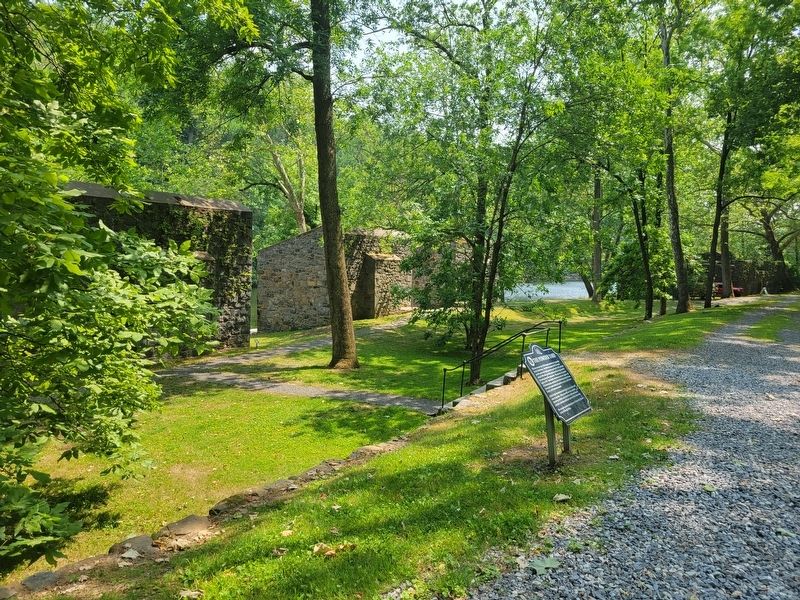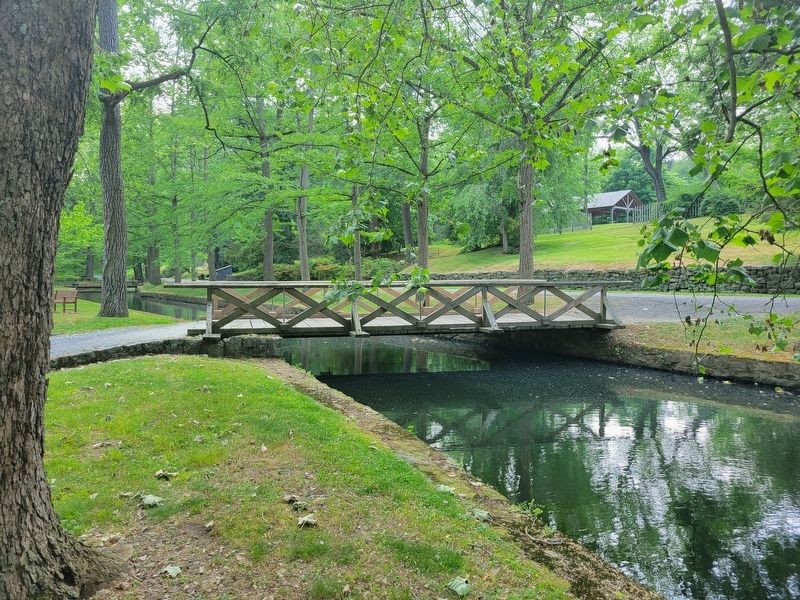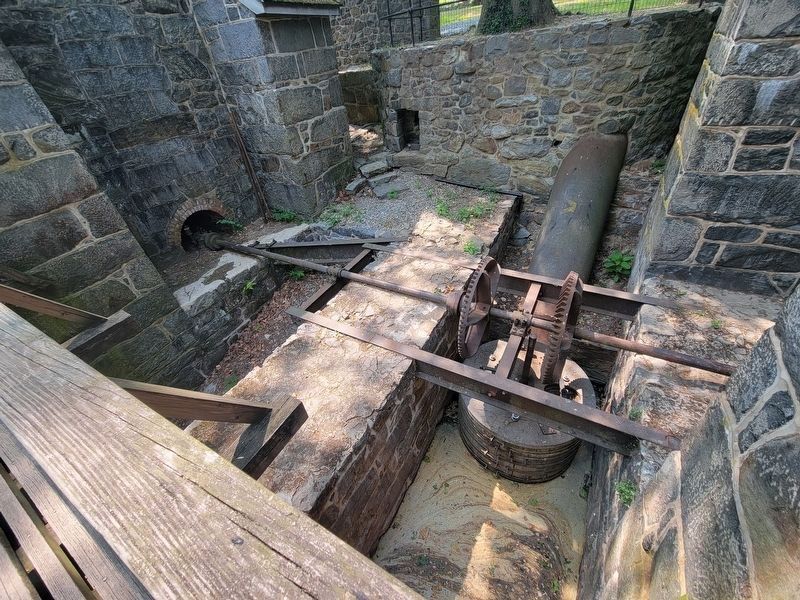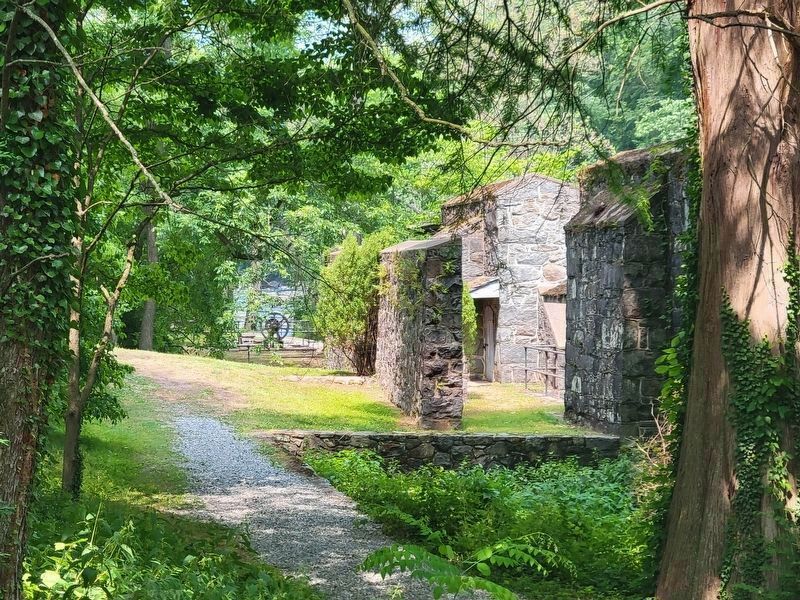Hagley Museum near Wilmington in New Castle County, Delaware — The American Northeast (Mid-Atlantic)
The Powder Yard
— Eleutherian Mills Hagley Yard —
This site was once part of the largest manufactory of gunpowder in the United States. The DuPont Company built this second powder yard on the Hagley property, purchased in 1813, when the original 1803 mills operating upstream could no longer meet the increasing demand for gunpowder. The operation was expanded again in 1837. That location, downstream and on the opposite side of the Brandywine, evolved in to the DuPont Experimental Station, the research center where such products as nylon, Tyvek, Kevlar, Corian, and Nomex were created.
At the height of production in the Hagley Yard, thirty-three mills were in operation. Today, some mills have been restored to operating condition, some adapted for exhibits and museum activities, and others stabilized to prevent further deterioration.
The complete powder making process is illustrated by dioramas in the Millwright Shop.
Erected by the Hagley Museum.
Topics. This historical marker is listed in this topic list: Industry & Commerce. A significant historical year for this entry is 1813.
Location. 39° 46.684′ N, 75° 34.442′ W. Marker is near Wilmington, Delaware, in New Castle County. It is in Hagley Museum. Marker can be reached from Hagley Creek Road south of Blacksmith Hill Road, on the right when traveling north. It is on the Hagley Museum property, reachable on foot or by tram after paying the entrance fee, on the walkway between the millrace and the mills buildings. Touch for map. Marker is at or near this postal address: 200 Hagley Creek Rd, Wilmington DE 19807, United States of America. Touch for directions.
Other nearby markers. At least 8 other markers are within walking distance of this marker. Eagle Roll Mills (within shouting distance of this marker); Roll Mill (within shouting distance of this marker); J.E. Rhoads & Sons of Delaware Tanbark Stone (within shouting distance of this marker); The Evolution of the Incorporating Process (within shouting distance of this marker); Powder Yard Gates (about 300 feet away, measured in a direct line); Site A: Millwright Shop (about 300 feet away); Millwright Shop (about 300 feet away); Blacksmith Shop (about 300 feet away). Touch for a list and map of all markers in Wilmington.
Also see . . . Wikipedia entry for Eleutherian Mills. Excerpt:
From 1802 to 1921, Eleutherian Mills was a gunpowder mill site used for the manufacture of explosives founded by Eleuthère Irénée du Pont, which grew into the DuPont company. The name also refers to the house on the hill above the mills, which was the first du Pont family home in America. ...(Submitted on June 13, 2023.)
Starting initially by reworking damaged gunpowder and refining saltpetre for the U.S. government, he quickly moved into gunpowder manufacture. ... The first domestic supplies of high-quality gunpowderin the U.S. were made here. By the end of 1804, DuPont had sold 39,000 pounds of powder; the following year, sales tripled. The federal government and John Jacob Astor's American Fur Company became regular customers. In 1813, the Hagley property, just downstream from the original mills, was purchased, doubling the size and capacity of the mills. ...Photographed By J. J. Prats, June 6, 20232. The Powder Yard and MarkerThe stone buildings are the powder mills. The millrace is out of frame on the right. Water flows beneath the pathway to wheels or turbines that are located between every two buildings, powering the buildings on its left and its right.
Between 1802 and 1921 there were 288 explosions leading to the deaths of 228 people. The three most deadly and remembered explosions occurred in 1818, 1890 and 1915. ... Another explosion in 1857 fatally injured five employees, including company partner Alexis Irénée du Pont.
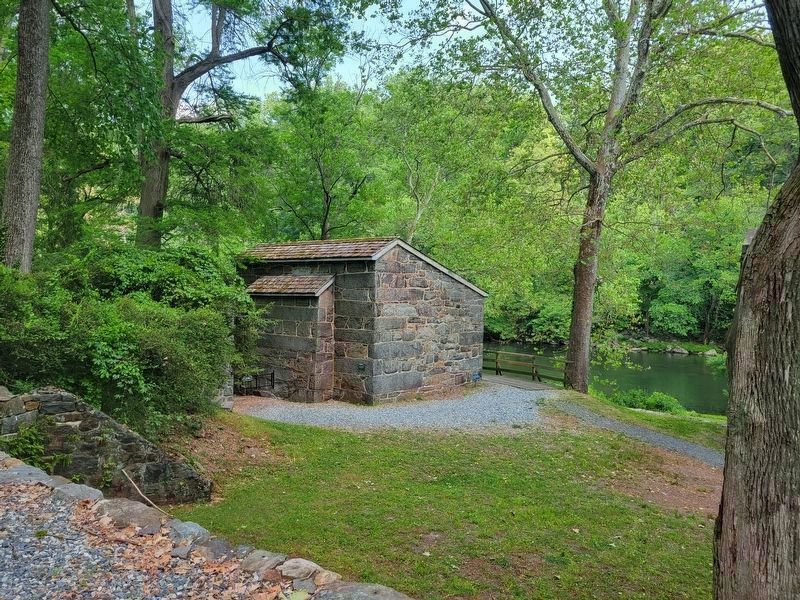
Photographed By J. J. Prats, June 6, 2023
5. A Mill House
Each building has three very thick stone stone wall sides, with the fourth side open, facing the creek. The lack of a fourth wall and a flimsy sloped roof is part of the design so that accidental explosions are directed towards the creek and away from workers and other buildings in the yard. Brandywine Creek can be seen in the distance on the right.
Credits. This page was last revised on February 11, 2024. It was originally submitted on June 13, 2023, by J. J. Prats of Powell, Ohio. This page has been viewed 112 times since then and 22 times this year. Photos: 1, 2, 3, 4, 5, 6. submitted on June 13, 2023, by J. J. Prats of Powell, Ohio.
